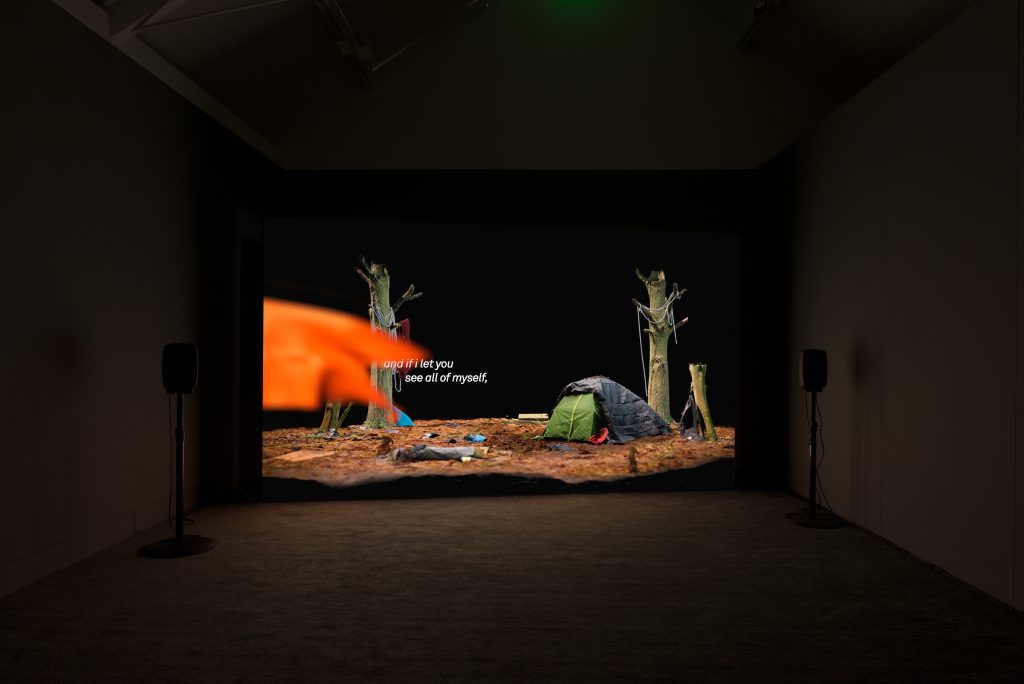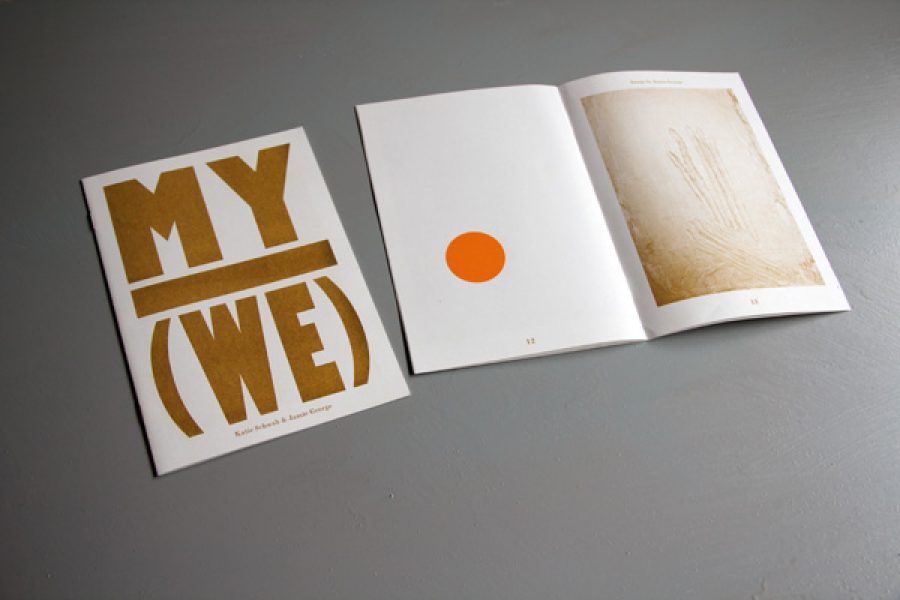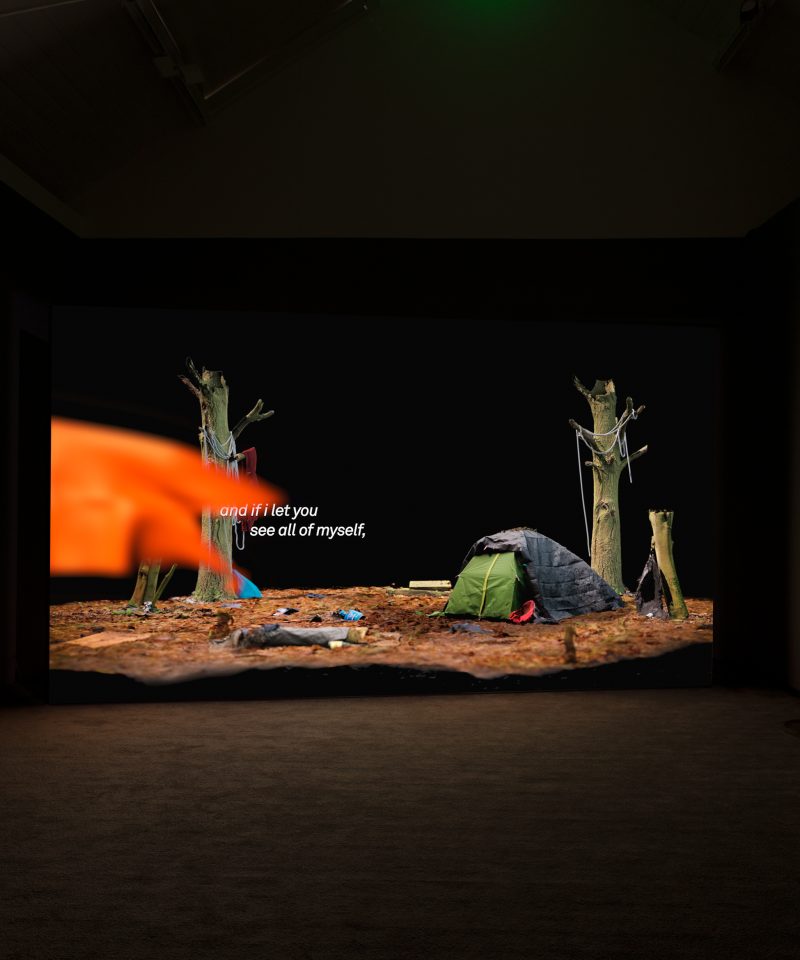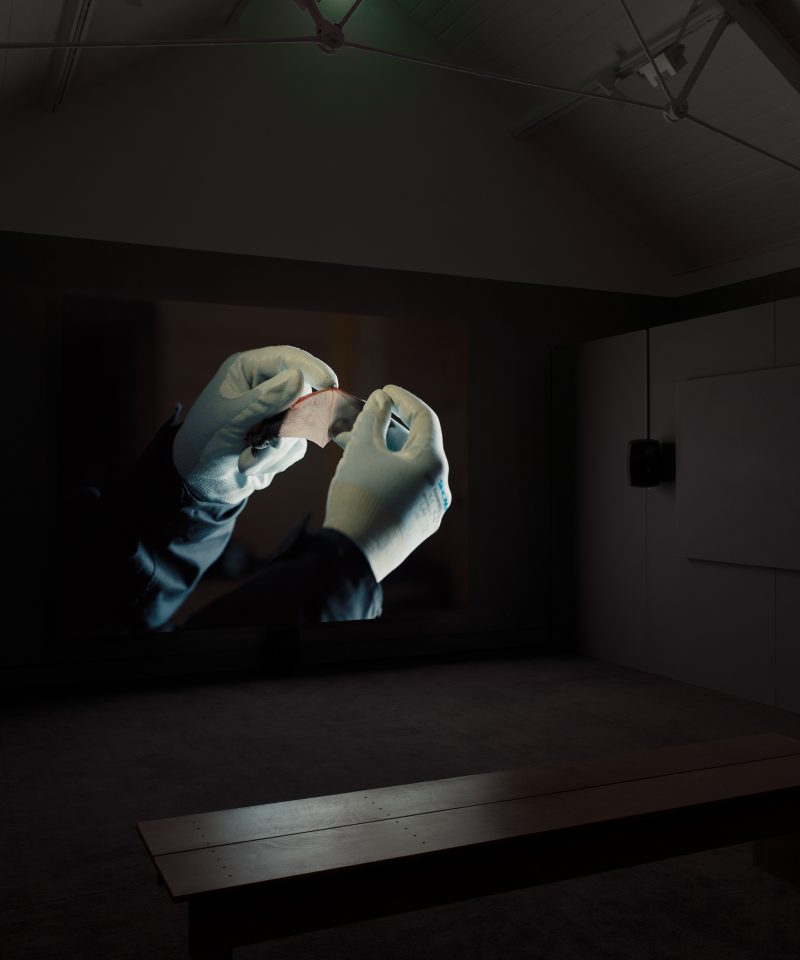First, a rumbling sound grows on the soundtrack, accompanied by eerie accents that evoke uncanny buzzing or birdsong. Then CGI images appear: a seemingly non-human eye strafes ground covered in dead leaves, twigs and occasional pieces of litter; it rotates mechanically, scanning, tracking, gathering information. On the soundtrack, a male voice whispers a prayer in Arabic. The camera becomes more mobile and speeds up, while additional unsettling drones and a siren are layered on the soundtrack. Then the image cuts to black and the audio slowly fades out.
In this first part of Imran Perretta’s 15 days, the immediately striking quality of the image is its mimetic nature: it mimics the autonomous, machinic eye of a drone. The gaze is forensic, disciplinary, military. Yet while the image-track is political (in the sense of instantiating state power), the voice on the soundtrack is theological. The prayer, perhaps, is recited as protection against the punitive, searching gaze. At the same time, the prayer draws attention to an ambiguity in the image-track itself, for we can now see that some of the shots at least are at the height of a human being looking down, and the frantic movements of the camera-eye are also readable as indicating someone agitatedly looking for shelter or seeking something lost on the ground.
This is only the first, shorter section of a diptych, however. In the second, we are shown the space that we recognise from the first part of the film, but we now view it frontally, from a single position, without cuts, as though we are looking at a stage. The scenographic quality is bolstered by the fact that this tableau is suspended in black, empty space. Two large trees in the background at either side, branches and leaves amputated, subtly frame this area and increase its proscenium-like nature. White cord hangs from their branches, swaying limply, indicating a light breeze. A hoodie hangs from a stub of branch; at the foot of the tree we can make out what appears to be a bag. In the middle ground, two smaller trees are even more violently severed, while another small trunk lies like a bone or a twig in the foreground. Various scraps are scattered around. Also in the middle ground, and crucial to the scene, is a tent. The atrophied, drained character of this mise en scène recalls the interzones of Samuel Beckett plays like Waiting for Godot and Endgame. We identify this scene, most probably, as the makeshift encampment of a marginalised or displaced population, even if we do not already know that 15 days is the result of Perretta’s time in Calais and Dunkirk in the period after the destruction of the refugee camp known as ‘The Jungle’.
The same voice as before speaks on the soundtrack, this time in Pashto. These words appear on screen in English, hovering in the middle left and moving gently in the breeze. The voice speaks in the first person, a narrative of forced migration and subjection to the white gaze and colonial state: ‘he uses the spray / so that i won’t have to look in his eye’. But the text is peppered with phrases from contemporary continental philosophy – ‘multitude’, ‘bare life’, ‘affect’ – and song lyrics – ‘i’ve seen this happen in other people’s lives / and now it’s happening in mine’ (from ‘That Joke Isn’t Funny Any More’ by The Smiths). Again, Beckett is conjured by the reference to ‘waiting / for the end to come’. Occasional stabs of audio accompany the speech: snaps, drum kicks and bass pulses that sound like a Roland TR-808 drum machine. The repeated blows of sound rip holes in the tent, spray out its contents and eventually flatten it. In the background, the empty space is sometimes replaced by fragments of video, a combination of high definition shots and poor images representing the daily aggressions of refugee life in Northern France, particularly interactions with police. Appearing like a rear projection or green screen, they figure the background conditions of living in such an encampment.
Initially, we might be tempted to read this second section using the conceptual inventory alluded to on the soundtrack. The attenuated, exhausted scenography might be a depiction of Giorgio Agamben’s notion of ‘bare life’: the state of being stripped of political rights and reduced to mute biological processes. For Agamben, the exclusion from the polis of bare life, exemplified most clearly in the refugee, is the condition of existence of the political life of others, of the nation state and of the citizen.[1] Given that the concentrated, boiled down scene also contains no human figures, it does indeed appear to be one defined by invisibility, absence, non-citizenship even. The voice suggests as well this state of being reduced to the condition of simultaneous biological life and political death, in phrases such as ‘i’m buried / by your pale gaze / in an unmarked grave still breathing’. We hear that ‘15 Days’ is the speaker’s name, due to fifteen days having passed since the police last came to take his things, and who is therefore defined entirely in relation to the interventions of a repressive state apparatus.
Yet on closer inspection, the film challenges this reading. The voice defies reduction to bare life by the white gaze: ‘know that i am not the one / they warned you about; / the uncanny stranger/ the dark threat; / one of the brown multitude / an “almost-but-not-quite” person’. And although the suspended state or limbo of the encampment could be seen to evoke a purgatory in which political rights do not exist, the snatches of video in the background present the constant, daily interactions, the encroachments and resistances, in which rights are contested, even by those seen to exemplify ‘bare life’. If Agamben’s is a model that understands politics juridically, as the bestowing or withholding of legal rights from powers on high, these mostly handheld shots critique the way such a model runs the risk of reinforcing what it describes, foreclosing in advance the political agency of marginalised people.[2]
Moreover, the lack of recognisable bodies (human figures are not present in the foreground scene, while in the video fragments faces are blurred out) should not be understood to represent an absence of agency. To be visible can, in fact, mean to be robbed of agency: classified, catalogued and tracked, of course, but also made into an object of pity: ‘and as she extends her pallid hands / towards darkened bodies / there’s this part of me that wonders / if she would be interested / were it not for this skin / these clothes / the great game / of power, privilege / and sad stories for the dinner table’. 15 Days is always protected, sheltered from figuration by being represented only via various acts of displacement: his story is reimagined poetically, then translated from an English text into Pashto and spoken by an actor; his body is only discernible by implication, as the maker of some of the grainy video images, and through the proxy of the tent, described by Perretta as ‘an organ, a lung’, which takes blows on 15 Days’s behalf.[3] This is unlike Perretta’s previous works brother to brother and DESH, in which his own naked body was central.
Although 15 days engages a visual regime of surveillance and control, in its drone-like opening section and use of CGI modelling throughout, and therefore uses what might be termed ‘operational images’ in the sense coined by Harun Farocki, Perretta’s employment of them is different: while Farocki films like War at a Distance (2003) tend to present operational images and analyse their function in industrial and military logics, 15 days’s strategy is to inhabit such a mode of capture and production of image and sound, as I have already suggested.[4] This process is akin to what Theodor Adorno calls the ‘mimesis of the hardened and alienated’ characteristic of modern art; it protests these techniques by paradoxically making them its medium.[5] At the same time, it refuses their aims: it neither gives us 15 Days’s body (unlike the contemporary practice of anatomical mapping known as biometrics, common in relation to border crossing),[6] nor his vital statistics, his metadata: age, nationality, legal name. In doing so, it turns this visual regime inside out.
[1] Giorgio Agamben, Homo Sacer: Sovereign Power and Bare Life, trans. Daniel Heller-Roazen (Stanford, CA: Stanford University Press, 1998)
[2] This latter point was suggested to me by Imran Perretta in informal conversation, 17 May 2018. One might make a similar argument with respect to the impulse to interpret this scene through the idea of abjection in Julia Kristeva’s sense (Julia Kristeva, Powers of Horror: An Essay on Abjection, trans. Leon S. Roudiez (New York: Columbia University Press, 1982)). While border control seems an exemplary case of socio-political abjection, an expulsion that occurs in order to maintain the purity and separation of the nation state, and while it is perhaps suggested in 15 Days in statements such as ‘you’d rather / i die / quickly / quietly / somewhere else’, the danger here is again of underplaying agency. To be abject is after all to be that which is abjected, and therefore represented in the passive voice.
[3] Imran Perretta in conversation with the author, 17 May 2018
[4] For a discussion of Farocki’s definition and theorisation of ‘operational images’, see Volker Pantenburg, ‘Working Images: Harun Farocki and the Operational Image’, in Jens Eder and Charlotte Klonk (eds.), Image Operations: Visual Media and Political Conflict (Manchester: Manchester University Press, 2017), pp. 49-62
[5] Theodor W. Adorno, Aesthetic Theory, ed. Gretel Adorno and Rolf Tiedemann, trans. Robert Hullot-Kentor (London and New York: Continuum, 1997), p. 21
[6] For an account of biometrics, see Zach Blas, ‘“A Cage of Information,” or, What is a Biometric Diagram’, in Erika Balsom and Hila Peleg (eds.), Documentary Across Disciplines (Cambridge, MA and London: MIT Press, 2016), pp. 80-90




